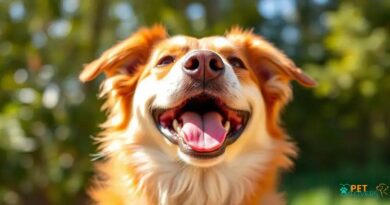What is intensity
What is Intensity in Dog Training?
Intensity in dog training refers to the level of energy, focus, and drive that a dog exhibits during various activities. It encompasses how engaged a dog is in training sessions, whether it’s obedience training, agility, or even playtime. Understanding intensity is crucial for trainers and dog owners alike, as it can significantly impact the effectiveness of training methods and the overall behavior of the dog.
Measuring Intensity in Dogs
Measuring a dog’s intensity can be subjective, but there are observable behaviors that can help gauge it. For instance, a dog that is highly focused on a task, such as retrieving a ball or following commands, demonstrates high intensity. Conversely, a dog that appears distracted or disinterested may be exhibiting low intensity. Factors such as the dog’s breed, age, and individual personality can all influence their intensity levels.
Factors Influencing Intensity
Several factors can influence a dog’s intensity during training or play. These include the dog’s motivation, the environment, and the type of activity being performed. For example, a dog may show higher intensity when engaging in activities they find particularly rewarding, such as playing fetch or receiving treats. Additionally, a stimulating environment with minimal distractions can enhance a dog’s focus and intensity.
High vs. Low Intensity Dogs
Understanding the difference between high and low intensity dogs is essential for tailoring training approaches. High intensity dogs are often more energetic and eager to participate, making them suitable for activities that require a lot of engagement, like agility training. On the other hand, low intensity dogs may require a gentler approach, focusing on building interest and motivation gradually to encourage participation.
How to Increase a Dog’s Intensity
Increasing a dog’s intensity can be achieved through various methods. One effective approach is to incorporate high-value rewards, such as favorite toys or treats, during training sessions. Additionally, varying the training routine and introducing new challenges can help maintain a dog’s interest and elevate their intensity. Regular exercise and mental stimulation are also key components in fostering a more engaged and intense dog.
Intensity and Behavioral Issues
Intensity can also play a role in behavioral issues. Dogs that exhibit high intensity may become overly excited or anxious, leading to problems such as jumping, barking, or destructive behavior. Conversely, low intensity dogs might display signs of lethargy or disinterest, which can also lead to behavioral concerns. Recognizing and addressing these intensity levels can help mitigate potential issues and promote a balanced behavior.
Intensity in Different Dog Breeds
Different dog breeds exhibit varying levels of intensity based on their genetic predispositions and historical roles. For instance, working breeds like Border Collies and German Shepherds are known for their high intensity and drive, making them excellent candidates for rigorous training. In contrast, breeds that were developed for companionship, such as Bulldogs or Basset Hounds, may naturally display lower intensity levels, requiring different training strategies.
Training Techniques for High Intensity Dogs
Training high intensity dogs often requires specific techniques to channel their energy effectively. Techniques such as clicker training, positive reinforcement, and structured play can help maintain their focus and enthusiasm during training sessions. It’s essential to provide clear commands and consistent feedback to keep high intensity dogs engaged and motivated throughout the learning process.
Training Techniques for Low Intensity Dogs
For low intensity dogs, training techniques should focus on building motivation and interest. Gradual exposure to new activities, combined with plenty of praise and rewards, can help increase their engagement levels. Shorter training sessions with frequent breaks can also prevent overwhelming low intensity dogs, allowing them to build confidence and gradually increase their intensity over time.



